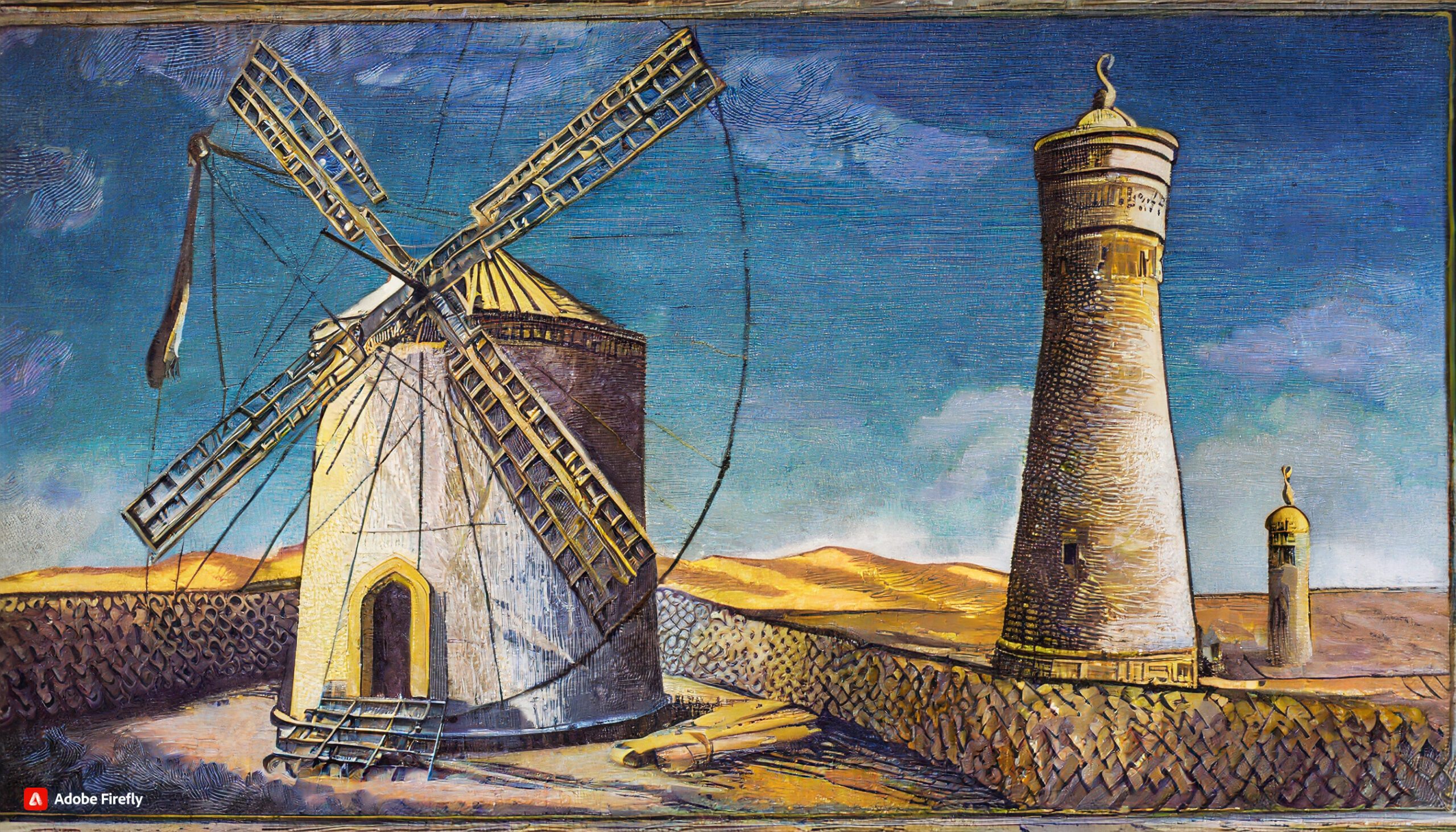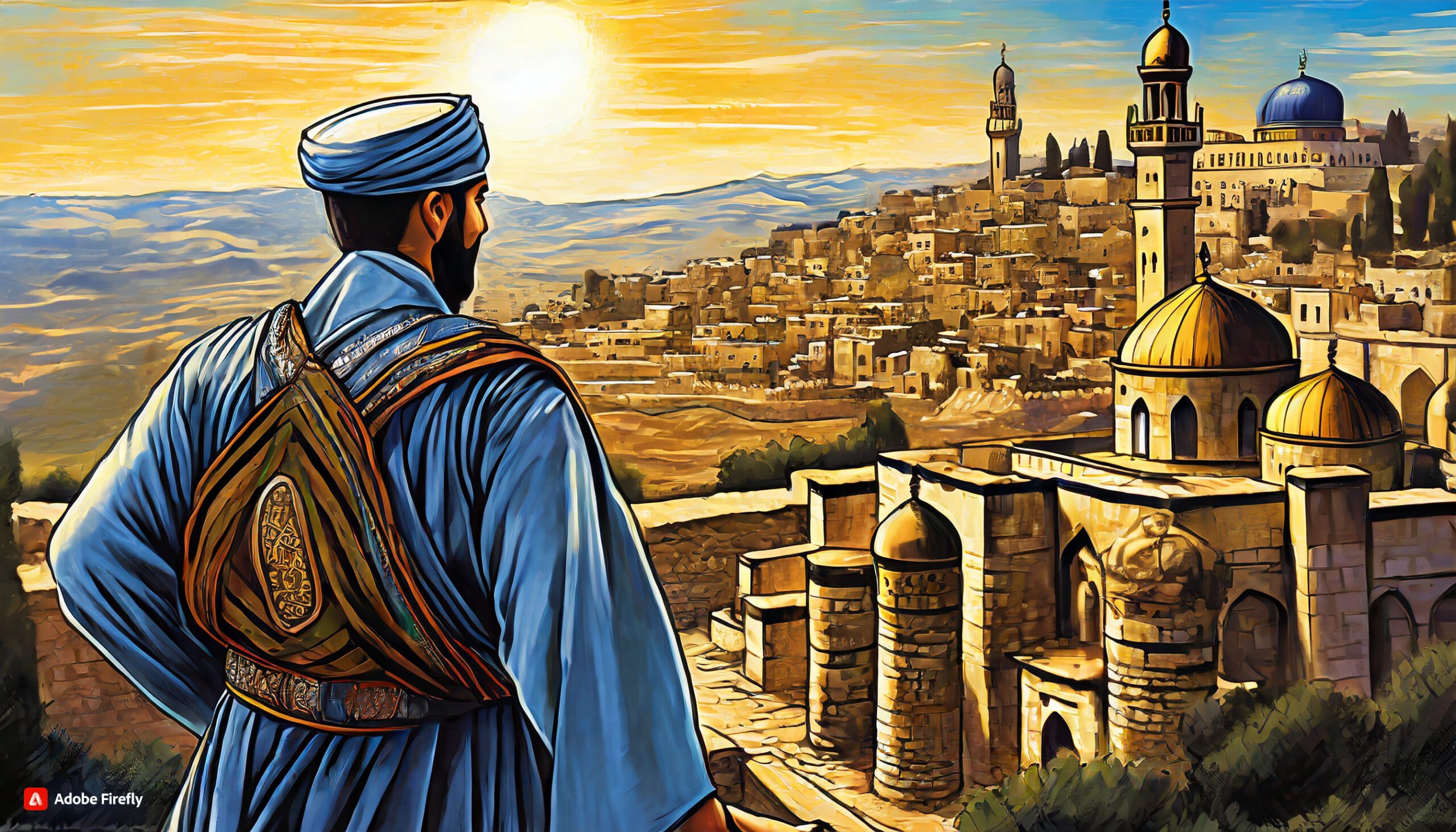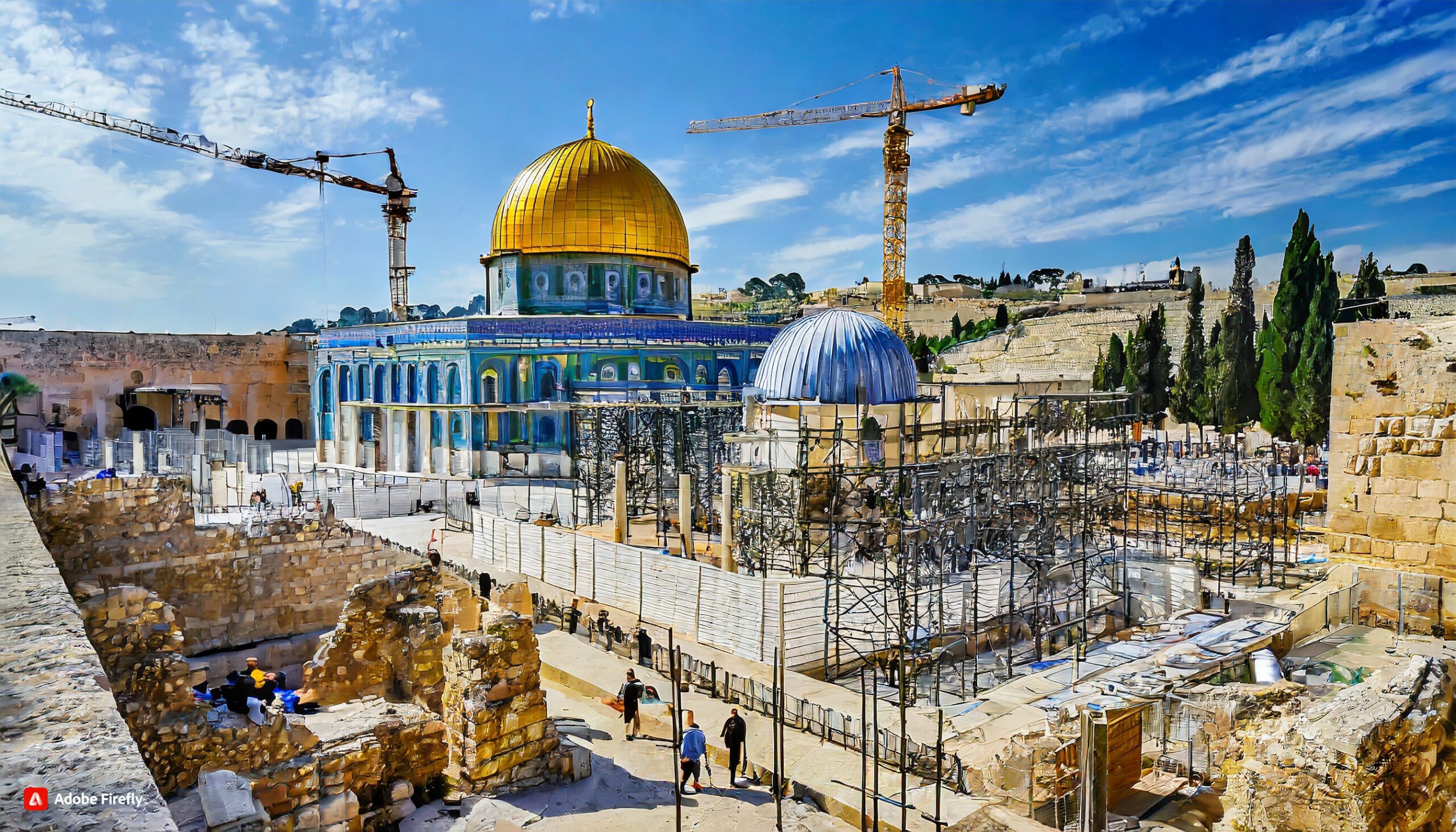Introduction
The 7th century was a time of profound historical significance, marked by extraordinary events that left an indelible imprint on human civilization. One of the most iconic occurrences was the birth of Islam in the 7th century, with the Holy Prophet Muhammad’s (Peace be Upon Him) revelations and the subsequent rapid spread of the faith across the Arabian Peninsula. Another notable event was the Battle of Tours in 732, where Charles Martel’s Franks halted the Islamic expansion into Europe. Moreover, the 7th century witnessed the rise of the Tang Dynasty in China, a golden age of culture and innovation, while in India, the Gupta Empire’s intellectual achievements flourished. This century was a pivotal moment in human history, shaping the world as we know it today.
The Rise of Islam and the Hijra (Migration) of Holy Prophet Muhammad (PBUH)
The rise of Islam and the Hijra (Migration) of Holy Prophet Muhammad (PBUH) in 622 AD are pivotal events in Islamic history. Here are some unique facts about this period:

- The Year of Sorrow: Before the Hijra, last Prophet Muhammad (PBUH) experienced a year known as the “Year of Sorrow” (619 AD). He lost his wife Hazrat Khadijah and his uncle and protector Hazrat Abu Talib, which made him vulnerable in Makkah and contributed to his decision to migrate.
- The Covenant of Medina: Upon arriving in Medina, last Prophet Muhammad (Peace Be Upon Him) established the Covenant of Medina, a constitution that outlined the rights and duties of various religious and tribal groups. It is considered one of the earliest examples of a constitution in human history.
- The Lunar Calendar: The Islamic calendar, also known as the Hijri or lunar calendar, is based on the events surrounding the Hijra. It has 12 months of 29 or 30 days, making it about 11 days shorter than the Gregorian calendar. This calendar is still in use in the Islamic world today.
- The Qibla Change: Before the Hijra, Muslims prayed facing Jerusalem, but after the migration, the direction of prayer (qibla) was changed to the Kaaba in Makkah. This shift symbolized the independence and identity of the Islamic community.
- Economic and Social Changes: The Hijra marked a significant shift in the economic and social structure of the early Muslim community. In Medina, agriculture and trade thrived, and the community began to develop its distinct economic system based on Islamic principles.
- The Battle of Badr: One of the first major military conflicts involving the Muslims took place after the Hijra in the form of the Battle of Badr (624 AD). Despite being outnumbered, the Muslims achieved a decisive victory, which solidified their position in Medina and within the Arabian Peninsula.
- Migration of Early Followers: The Hijra was not limited to Holy Prophet Muhammad (Peace Be Upon Him) alone. Many early Muslims migrated to Medina, leaving behind their homes and belongings. This migration demonstrates their commitment to their faith and the message of Islam.
- Interfaith Relations: In Medina, Holy Prophet Muhammad (PBUH)established peaceful relations with Jewish and non-Muslim Arab tribes. These interactions had a profound influence on the development of Islamic jurisprudence and interfaith dialogue.
- The Treaty of Hudaybiyyah: After the Hijra, Holy Prophet Muhammad (PBUH) attempted to perform the pilgrimage to Mecca but was prevented. Instead, a truce known as the Treaty of Hudaybiyyah was established with the Meccans, allowing Muslims to return to Mecca for the pilgrimage in subsequent years.
- The Conquest of Mecca: In 630 AD, after several years in Medina, Holy Prophet Muhammad (PBUH) and his followers peacefully reconquered Mecca. This event marked the triumph of Islam in the Arabian Peninsula and the unification of the Arab tribes under the banner of Islam.
The Hijra was a turning point in Islamic history, as it led to the establishment of a thriving Muslim community in Medina and paved the way for the spread of Islam beyond the Arabian Peninsula. It remains a central and celebrated event in the Islamic calendar.
Islamic conquests across the Arabian Peninsula and North Africa
- Speed of Conquests: One of the most remarkable aspects of the Islamic conquests was their speed. Within a few decades, the Islamic armies managed to conquer vast territories, from the Arabian Peninsula to North Africa, in an astonishingly short span of time. This rapid expansion is a testament to the military and strategic prowess of the early Muslim forces.
- Tolerance of Other Religions: Contrary to the common perception of forced conversions, the Islamic conquests often exhibited religious tolerance. Non-Muslims, known as “dhimmis,” were allowed to practice their faith and retain their customs as long as they paid a tax. This policy allowed various religious communities to coexist in the newly conquered territories.
- Preservation of Knowledge: Islamic conquerors played a crucial role in preserving knowledge from the ancient world. In cities like Alexandria, which they captured, they safeguarded countless texts and manuscripts, many of which were later translated into Arabic, contributing to the preservation and dissemination of classical knowledge.
- Administrative Innovations: The Islamic conquests led to the development of innovative administrative systems, such as the division of territories into provinces or “wilayat,” each governed by an appointed official or “wali.” These systems laid the foundation for efficient governance and tax collection in the conquered lands.
- Cultural Exchange: The Islamic conquests facilitated cultural exchange between the Arab, Persian, and Byzantine worlds. This exchange influenced art, architecture, science, and philosophy, leading to a rich fusion of cultures that had a lasting impact on the regions under Islamic rule.
- The Spread of Arabic Language: The Islamic conquests greatly contributed to the spread of the Arabic language. Arabic became the language of administration, culture, and scholarship in the conquered territories, and it continues to be a unifying linguistic force in the Arab world today.
- The House of Wisdom: In Baghdad, during the Abbasid Caliphate, the establishment of the “House of Wisdom” (Bayt al-Hikmah) became a center of learning and translation. Scholars from various backgrounds gathered there, translating ancient texts into Arabic and advancing knowledge in fields like mathematics, astronomy, medicine, and philosophy.
- Influence on Islamic Art and Architecture: The Islamic conquests played a significant role in shaping Islamic art and architecture. Elements of Persian, Byzantine, and Central Asian styles were blended with Islamic aesthetics, resulting in unique and intricate designs, exemplified in the beauty of mosques, palaces, and calligraphy.
- Agricultural and Scientific Contributions: Islamic conquerors brought advanced irrigation and agricultural practices to arid regions, improving agricultural productivity. They also made significant contributions to fields like mathematics, optics, and medicine, which later influenced the European Renaissance.
- Legacy of the Islamic Conquests: The Islamic conquests left a lasting legacy that extended far beyond the 7th century. The spread of Islam, Arabic culture, and the preservation of knowledge all contributed to the development of a rich and diverse Islamic civilization, influencing the world for centuries to come.
Tang Dynasty’s golden age in China (618-907 AD)

- Invention of Woodblock Printing: During the Tang Dynasty, woodblock printing was refined and widely used to reproduce texts and images. The world’s oldest surviving printed book, the Diamond Sutra, dates back to this period. Woodblock printing was a pivotal development in the history of printing and played a significant role in the dissemination of knowledge.
- Expansion of the Grand Canal: The Tang Dynasty witnessed significant expansion of the Grand Canal, a vast waterway system that connected northern and southern China. This extensive canal network facilitated transportation, trade, and communication, contributing to economic growth and cultural exchange.
- Flourishing Poetry: The Tang Dynasty is often referred to as the “Golden Age of Chinese Poetry.” Renowned poets like Li Bai and Du Fu created exquisite works of literature, exploring themes of love, nature, and the human condition. Their poems continue to be celebrated for their eloquence and emotional depth.
- The Equal-Field System: The Tang Dynasty introduced the Equal-Field System, a land distribution policy aimed at reducing wealth inequality and ensuring equitable land distribution among the population. This system helped stabilize the agrarian economy and fostered social harmony.
- Advances in Medicine: The Tang Dynasty made notable advancements in the field of medicine. The famous medical text “The Tang Code,” written by Sun Simiao, compiled medical knowledge of the time and laid the foundation for traditional Chinese medicine.
- China’s First Female Emperor: Empress Wu Zetian, who ruled from 690 to 705, was a remarkable figure in the Tang Dynasty. She was the only woman in Chinese history to rule as Emperor in her own right and left a significant imprint on the dynasty’s history.
- Foreign Relations and Diplomacy: The Tang Dynasty maintained diplomatic ties and engaged in trade with many neighboring and distant regions, including the Middle East and Central Asia along the Silk Road. This facilitated the exchange of goods, cultures, and ideas, contributing to the cosmopolitan character of the era.
- Artistic Achievements: The Tang Dynasty produced some of China’s most iconic artistic creations, particularly in the realms of ceramics, sculpture, and painting. The era is known for its distinctive tri-colored (sancai) pottery, which features vibrant glazes in green, amber, and cream colors.
- Construction of the Giant Wild Goose Pagoda: One of the most famous landmarks of the Tang Dynasty is the Giant Wild Goose Pagoda in Xi’an. Built to house Buddhist scriptures brought from India, it stands as a testament to the strong cultural ties between China and other Asian civilizations.
- Revival of Confucianism: The Tang Dynasty saw a resurgence of Confucianism as a dominant ideology, influencing state policies and education. The imperial examination system was reestablished during this time, allowing scholars to attain positions based on merit, rather than birth, which had a lasting impact on Chinese governance.
The Tang Dynasty’s golden age is often remembered as a period of innovation, cultural flourishing, and global engagement, contributing significantly to the rich tapestry of Chinese history and civilization.
Battle of Tours, halting the Muslim expansion into Europe

The Battle of Tours, also known as the Battle of Poitiers, was a pivotal conflict that occurred in 732 AD, which is renowned for its role in halting the Muslim expansion into Europe. This significant event took place near Tours, in present-day France, when Frankish forces, led by Charles Martel, confronted the Umayyad Caliphate’s army, led by Abdul Rahman Al Ghafiqi.
The Umayyad Caliphate, which had been rapidly expanding its territory across North Africa and the Iberian Peninsula, sought to extend its conquests further into Europe. The clash at Tours marked a critical juncture in this expansion.
Charles Martel’s Frankish army employed a disciplined and heavily armored infantry, with a core of warriors known as the Carolingian Heavy Infantry. This Frankish force successfully withstood the Umayyad cavalry charges and mounted a counteroffensive, leading to a decisive victory.
The outcome of the Battle of Tours was profound, as it effectively halted the Umayyad advance into Europe. The Frankish victory is often considered a turning point in European history, as it helped preserve Western Christendom and prevent further Islamic expansion into Europe. While this battle did not entirely reverse the Muslim presence in the Iberian Peninsula, it significantly limited their northward expansion.
Charles Martel’s leadership and the valor of his troops in this battle have earned him the moniker “Martel,” which means “The Hammer” in French. The Battle of Tours holds a lasting place in the collective memory of Europe and stands as a symbol of resistance to foreign invasions. It remains a subject of historical debate and fascination due to its far-reaching consequences for the course of European history.
Invention of the windmill in Persia

- Early Harnessing of Wind Energy: The development of windmills in Persia marked one of the earliest instances of humanity successfully harnessing wind energy. This innovation reflects the ingenuity of Persian engineers in utilizing natural forces to enhance productivity.
- Vertical-Axis Windmill Design: The vertical-axis windmill design used in Persia was a distinct departure from the later horizontal-axis windmills commonly seen in Europe. This unique design showcased the versatility of wind energy utilization.
- Agricultural Advancements: Persian windmills were primarily used for milling grain. By automating this task, they played a crucial role in advancing agriculture and food production in Persia and beyond.
- Water Pumping Capabilities: In addition to milling, Persian windmills were also employed for pumping water. This function was particularly significant in arid regions, where access to water was a critical factor for agriculture and daily life.
- Influence on Windmill Development Worldwide: The transmission of windmill technology from Persia to other parts of the world had a profound impact on the evolution of windmill designs. The concept was adopted and adapted by various cultures, leading to a rich diversity of windmill types and applications.
- Trade and Cultural Exchange: The spread of windmill technology was facilitated by trade and cultural exchange along the Silk Road and other trade routes. It exemplifies how innovations can transcend borders and enrich the global pool of knowledge.
- Sustainable Energy Heritage: The invention of the windmill in Persia is a testament to ancient civilizations’ early commitment to harnessing renewable energy sources. This heritage is particularly relevant in the modern context of sustainability and renewable energy solutions.
- Historical Significance: The Persian windmill’s historical importance extends beyond its technical aspects. It symbolizes the role of technology in improving the quality of life and driving economic development, themes that resonate across different periods of history.
- Cultural Legacy: The Persian windmill contributes to the cultural heritage of Iran and the broader Islamic world. It highlights the significance of technological achievements in shaping the identity and progress of civilizations.
- Ongoing Relevance: Wind energy remains a vital component of the global renewable energy landscape. The invention of the windmill in Persia serves as a historical anchor point for understanding the long journey of harnessing wind power and its role in contemporary efforts to combat climate change and promote sustainability.
The spread of the Islamic Caliphate into Spain

- The Year 711 AD: The Islamic Caliphate’s expansion into Spain began in the year 711 AD when an army of Umayyad Berbers and Arabs, led by Tariq ibn Ziyad, crossed the Strait of Gibraltar, marking the commencement of Islamic rule on the Iberian Peninsula.
- Crossing the Mountains: Tariq ibn Ziyad’s army faced the formidable barrier of the Pyrenees Mountains when advancing further into the region. To motivate his troops, Tariq famously burned his own ships, leaving no retreat, and encouraged them to “burn the boats.”
- The Battle of Guadalete: The pivotal Battle of Guadalete in 711 AD was a significant turning point. Tariq’s forces defeated the Visigothic king Roderic, enabling the Islamic Caliphate to establish control over much of the Iberian Peninsula.
- Rapid Expansion: The Islamic conquests in Spain proceeded quickly, and within a few years, the Muslims ruled over a substantial portion of the Iberian Peninsula, introducing Islamic culture and governance.
- Cordoba’s Great Mosque: One of the most iconic structures built during this era was the Great Mosque of Cordoba, renowned for its stunning architecture, with red and white striped arches and a unique horseshoe arch design. It later became a symbol of the region’s Islamic heritage.
- Cultural Exchange: Islamic rule in Spain led to a vibrant period of cultural exchange known as “Al-Andalus.” This era saw the merging of Islamic, Jewish, and Christian influences, fostering an atmosphere of tolerance and cooperation that enriched arts, sciences, and philosophy.
- The Golden Age of Al-Andalus: Al-Andalus, particularly during the 10th century, experienced a “Golden Age” of intellectual and cultural growth. It was a hub of learning and innovation, with contributions to fields such as mathematics, astronomy, medicine, and literature.
- Multilingual Society: Al-Andalus was characterized by a multilingual society where Arabic, Hebrew, and various Romance languages coexisted, contributing to the preservation and transmission of knowledge from various civilizations.
- The Reconquista: The Islamic rule in Spain faced resistance and a gradual Christian reconquest known as the “Reconquista.” The process spanned several centuries, eventually culminating in the fall of Granada in 1492, marking the end of Islamic rule in Spain.
- Lasting Legacy: The Islamic period in Spain left an enduring legacy in architecture, language, culture, and cuisine. Landmarks such as the Alhambra and Alcázar continue to attract visitors, and the Arabic influence on the Spanish language is still evident today. The coexistence and interaction of diverse cultures during this time continue to shape Spain’s rich heritage.
The conquest of Jerusalem by Caliph Hazrat Umar (AS) (637 AD)

The conquest of Jerusalem by Caliph Gazrat Umar (AS) in 637 AD is a historically significant event with several unique and interesting aspects:
- Peaceful Surrender: Caliph Hazrat Umar’s conquest of Jerusalem is notable for its relatively peaceful surrender. Patriarch Sophronius of Jerusalem is said to have negotiated the city’s surrender with Caliph Umar. The terms allowed religious freedom and protection of the city’s inhabitants, a departure from the harsher treatment seen in some other conquests of the time.
- Honoring the Covenant of Hazrat Umar (AS): After the conquest, Caliph Umar (AS) is believed to have issued a document known as the “Covenant of Umar” or “Pact of Umar.” This pact established guidelines for the treatment of non-Muslims in conquered lands, emphasizing religious tolerance and protection of their property and places of worship.
- Protection of Religious Sites: The protection of religious sites, including the Church of the Holy Sepulchre and the Western Wall, was a significant aspect of Caliph Hazrat Umar’s rule. This commitment to safeguarding the holy places of Jerusalem is noteworthy.
- Influence on Later Islamic Rule: The principles set forth during the conquest and Umar’s rule in Jerusalem influenced subsequent Islamic governance in the city and served as a model for later caliphs and Muslim rulers.
- Religious Significance: The capture of Jerusalem was a momentous event for Muslims, as it marked the first time they gained control of a city with religious significance. It is the third holiest city in Islam, after Mecca and Medina, and the site of the Al-Aqsa Mosque, considered the farthest mosque mentioned in the Quran.
- Architectural Transformations: Under Islamic rule, Jerusalem witnessed architectural changes, with the construction of religious and cultural structures. The Dome of the Rock, built on the Temple Mount, remains one of the most iconic symbols of Islamic architecture.
- Cultural Exchange: The Islamic period in Jerusalem fostered cultural exchange between various communities, including Muslims, Christians, and Jews. This interaction contributed to the city’s rich multicultural history.
- Centuries of Rule: Islamic rule in Jerusalem persisted for centuries, with different dynasties and empires governing the city, including the Umayyads, Abbasids, and Ottomans. The longevity of this rule left a profound imprint on the city’s character.
- Complex History: The history of Jerusalem is intricate, marked by various periods of conquest and change. The conquest by Caliph Hazrat Umar (AS) was one of many episodes that shaped the city’s diverse and layered heritage.
- Ongoing Significance: The legacy of Caliph Hazrat Umar’s conquest and Islamic rule in Jerusalem continues to influence the city’s cultural and religious dynamics, making it a central point of focus in discussions of religion, history, and geopolitics.
The construction of the Dome of the Rock in Jerusalem (691 AD)

The construction of the Dome of the Rock in Jerusalem in 691 AD is a fascinating historical and architectural achievement with several unique and interesting aspects:
- Iconic Architecture: The Dome of the Rock is renowned for its iconic architectural design. It features a striking golden dome and an octagonal structure adorned with intricate mosaics, calligraphy, and vibrant patterns, making it one of the most recognizable religious monuments in the world.
- Purpose and Controversy: The exact purpose of the Dome of the Rock has been a subject of debate. While often referred to as a mosque, it was originally built as a shrine to commemorate the “Night Journey” of the Islamic prophet Muhammad. Its location on the Temple Mount in Jerusalem, a site of great religious significance to Jews and Christians, has led to ongoing historical and religious controversy.
- Early Use of the Byzantine Style: The construction of the Dome of the Rock incorporated elements of Byzantine architectural style. It is said that Byzantine artisans were involved in its construction, and this fusion of styles reflects the intercultural interactions of the era.
- Use of Geometric Patterns: The mosaics inside the Dome of the Rock feature intricate geometric patterns, emphasizing the mathematical and artistic achievements of the Islamic world during this period. These patterns are not only aesthetically pleasing but also symbolize the harmony and balance of the universe.
- Inscriptions and Calligraphy: The interior of the dome is adorned with Quranic inscriptions and calligraphy in the Kufic script. The inclusion of religious text and calligraphic art is a hallmark of Islamic architecture.
- Theological Significance: The rock at the center of the Dome is believed to be the spot from which the Prophet Muhammad ascended to the heavens during the Night Journey, according to Islamic tradition. This sacred rock is covered by a wooden structure, visible through a hole in the floor.
- Ongoing Symbolism: The Dome of the Rock remains a symbol of Jerusalem and its religious significance, making it a focal point for both religious pilgrims and tourists. It has also been the backdrop for various historical events and conflicts in the region.
- Surviving the Centuries: The Dome of the Rock has endured for over a millennium, surviving various political changes, conflicts, and natural disasters. Its resilience and continued existence make it a testament to the enduring value of cultural heritage.
- Restorations and Renovations: Over the centuries, the Dome of the Rock has undergone several renovations and restorations. These efforts aimed to preserve its architectural and historical significance, allowing it to remain a symbol of Jerusalem’s cultural heritage.
- Interfaith Significance: The Dome of the Rock stands as a testament to the shared religious heritage of the Abrahamic faiths, serving as a symbol of Jerusalem’s significance to Judaism, Christianity, and Islam. This interfaith connection continues to be a central theme in discussions of Jerusalem’s history and future.
Tang Dynasty’s construction of the Grand Canal in China

The construction of the Grand Canal during the Tang Dynasty in China is a remarkable feat of engineering and infrastructure development with several unique and interesting aspects:
- Incredible Length and Scope: The Grand Canal is one of the longest artificial waterways in the world, stretching over 1,100 miles (1,800 kilometers). It connected the Yellow River in the north to the Yangtze River in the south, linking the country’s two major river systems.
- Ancient Beginnings: The idea of connecting these rivers dates back to the 5th century BC during the Warring States period, but it was during the Sui and Tang Dynasties (7th to 10th centuries) that the construction was initiated and completed.
- Labor-Intensive Construction: The construction of the Grand Canal was a colossal endeavor, involving millions of laborers, including conscripted peasants and skilled craftsmen. The work was labor-intensive, involving digging canals, building locks and dams, and dredging rivers.
- Transportation and Trade: The Grand Canal played a pivotal role in facilitating transportation and trade in ancient China. It allowed the efficient movement of goods, people, and military forces across the empire, contributing to economic growth and cultural exchange.
- Cultural and Ethnic Exchange: The Grand Canal encouraged cultural and ethnic exchange as it passed through various regions, including the heartland of the Chinese civilization in the north and the culturally diverse south. This cultural exchange enriched China’s history and heritage.
- Maritime Silk Road Connection: The Grand Canal had a connection to the Maritime Silk Road, which extended beyond China’s borders. This facilitated trade between China and distant regions, contributing to the global exchange of goods and ideas.
- Historical Significance: The Grand Canal is not only an engineering marvel but also a historical icon. It is considered a symbol of China’s ancient civilization, technological achievements, and the centralized power of the Chinese imperial system.
- Economic Impact: The construction and operation of the Grand Canal significantly boosted the Chinese economy by reducing transportation costs, allowing agricultural surpluses to be transported from the south to the north, and supporting the growth of industries along its route.
- Incorporation of Natural Features: Engineers incorporated natural features like lakes, rivers, and marshes into the canal system, reducing the need for extensive excavation and making use of existing bodies of water.
- Legacy and Preservation: Parts of the Grand Canal continue to be in use today, and UNESCO has designated sections of it as a World Heritage site. Its enduring legacy highlights the lasting significance of this ancient waterway in Chinese history and culture.
The declaration of the Umayyad Caliphate (661 AD)

The declaration of the Umayyad Caliphate in 661 AD marked a pivotal moment in Islamic history and governance. Here are some unique and interesting facts about this event:
- Succession Controversy: The Umayyad Caliphate was established in the aftermath of the assassination of the third caliph, Uthman ibn Affan. This event, along with the earlier assassination of the fourth caliph, Ali ibn Abi Talib, led to deep-seated disputes over leadership within the Islamic community.
- First Hereditary Caliphate: The Umayyad Caliphate is historically significant because it marked the transition from a period of “Rightly Guided” or Rashidun caliphs, who were selected based on their religious piety and proximity to the Prophet Muhammad, to a hereditary system of leadership. Muawiya I, the first Umayyad caliph, established a dynastic rule, where leadership was passed down within the Umayyad family.
- Seat of Power in Damascus: Muawiya I moved the capital of the caliphate from Medina to Damascus, Syria, establishing it as the center of Umayyad power. This shift reflected a geographical and cultural change from the Arabian Peninsula to the wider Islamic world.
- Military Expansion: The Umayyad Caliphate was marked by a period of significant military expansion. Under the leadership of caliphs like Muawiya I and his successor, Yazid I, the caliphate expanded its territory into North Africa, the Iberian Peninsula (modern-day Spain and Portugal), and areas of Central Asia.
- Spread of Islam: The Umayyad Caliphate’s expansion led to the spread of Islam to regions that had not previously been under Islamic rule. It introduced the religion and its culture to diverse populations in North Africa and Europe, influencing the course of history in these areas.
- Arabization of the Caliphate: During the Umayyad rule, Arabic became the dominant language and culture of the caliphate. Arabic was used for administration, governance, and cultural expression, furthering the development of the Arabic language and script.
- Construction Projects: The Umayyad Caliphs undertook extensive construction projects, including the construction of the Dome of the Rock in Jerusalem and the Umayyad Mosque in Damascus. These architectural marvels remain iconic landmarks to this day.
- Cultural Interaction: The Umayyad Caliphate was a hub of cultural interaction and exchange. It absorbed and incorporated elements of the cultures and traditions of conquered regions, contributing to the diversity of the Islamic civilization during this period.
- End of the Umayyad Caliphate: The Umayyad Caliphate lasted until 750 AD, when it was overthrown by the Abbasid Revolution. The Umayyad dynasty’s decline was partly due to internal strife, a push for social justice, and the desire for a return to the earlier principles of the caliphate.
- Historical Legacy: The Umayyad Caliphate is a significant chapter in Islamic history, with a lasting impact on the development of Islamic governance, the spread of Islam, and the cultural and architectural heritage of the Islamic world.
